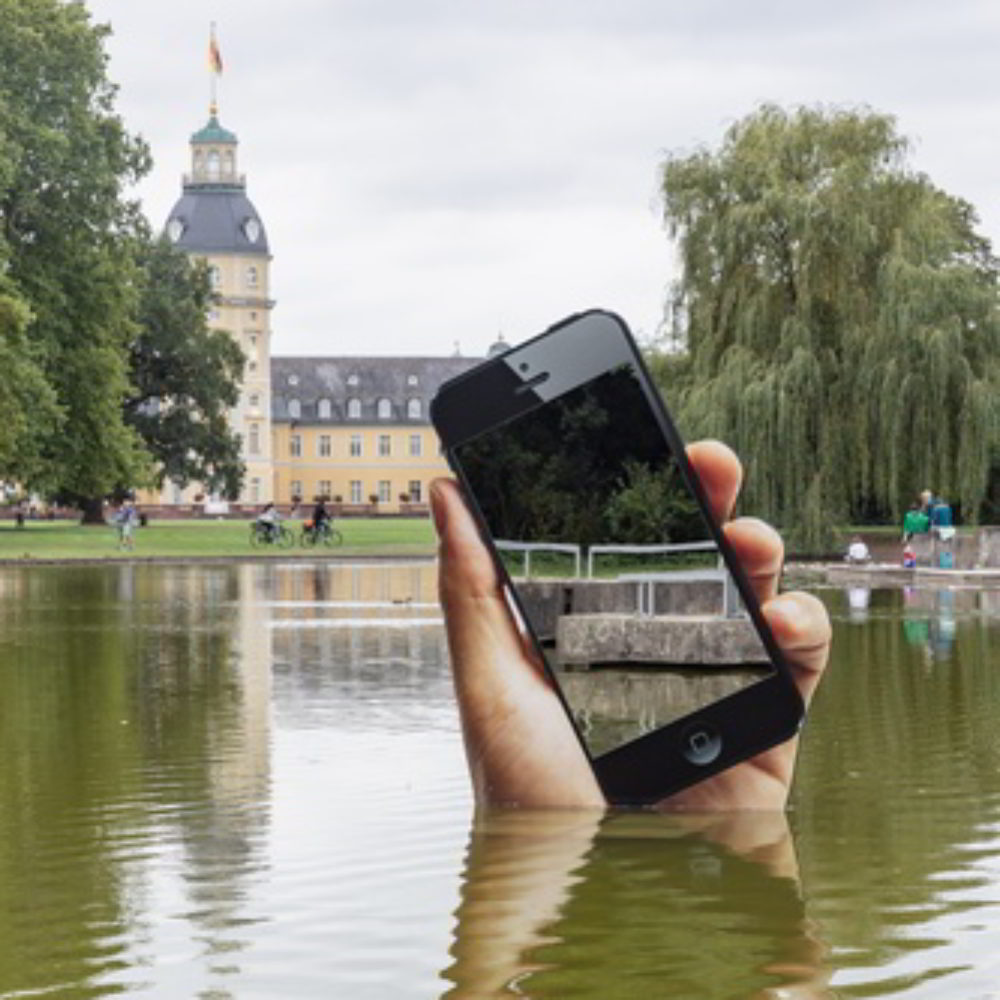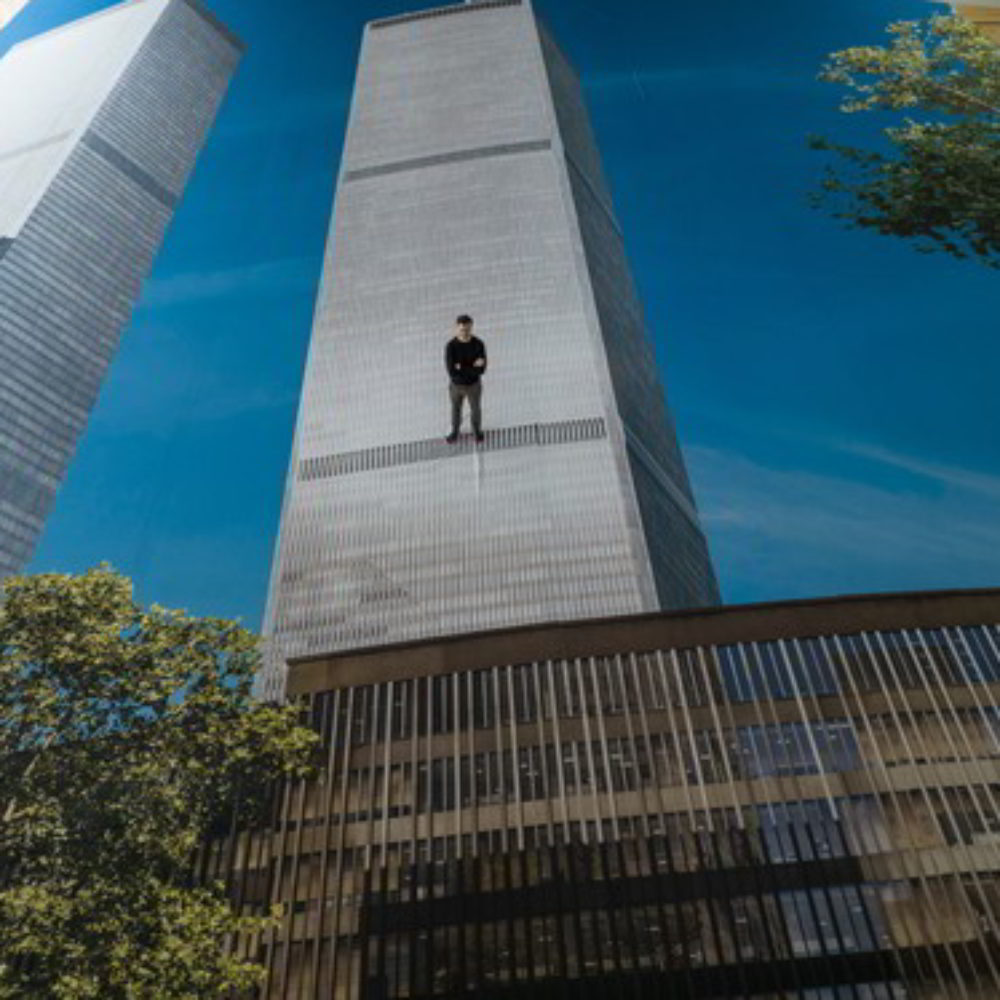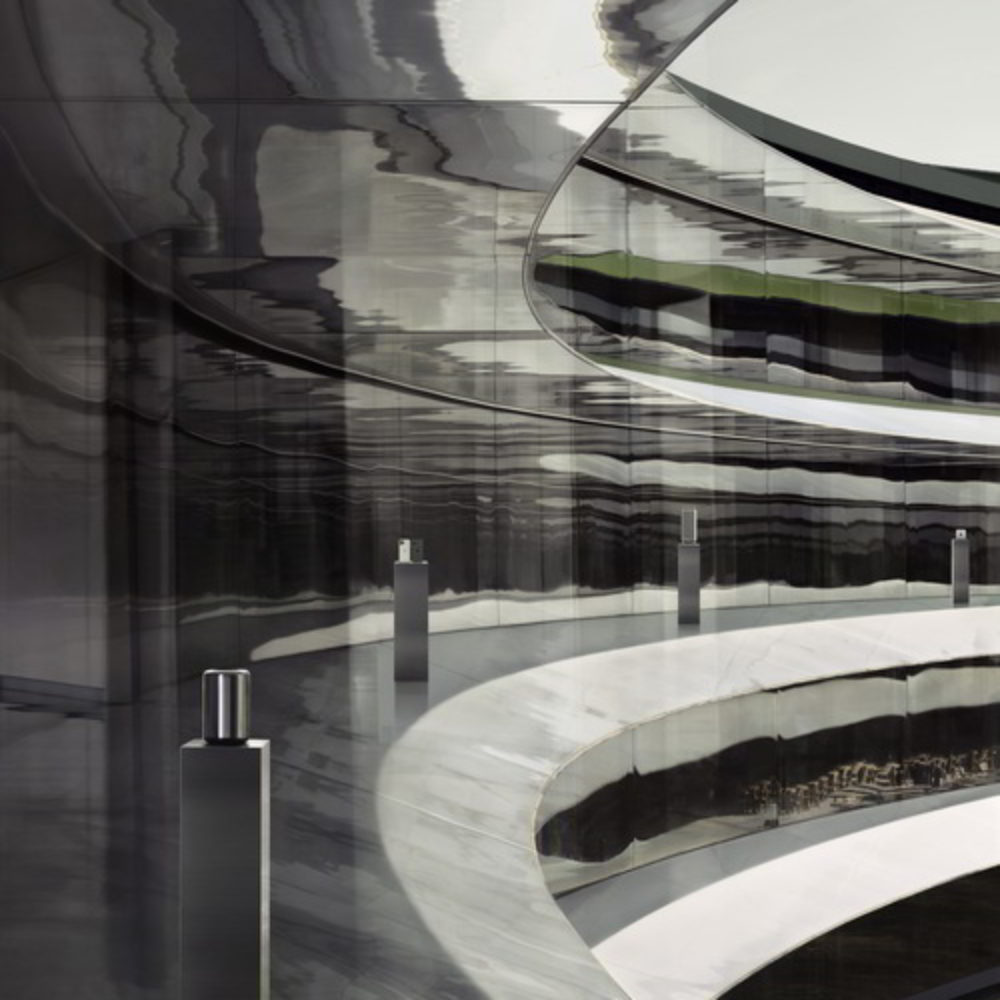Die britische Künstlerin Esther Rolinson präsentiert Luminations: eine groß angelegte öffentliche Kunstinstallation, die mit Hilfe von Straßenlaternen den Geist einer alten Küstenstadt im Norden Englands komplett erneuert
19. Juni 2022 | Caroline Menezes
S
tellen Sie sich ein über 500 Meter langes Kunstwerk aus computergenerierten Lichtern mit atemberaubenden Farben und Formen vor, das fast 10 Meter über den Köpfen der Fußgänger schwebt, die an der Strandpromenade einer malerischen Kleinstadt an der englischen Meeresküste entlangspazieren. Dies ist Luminations, eine ortsspezifische Kunstinstallation der britischen Multimedia-Künstlerin Esther Rolinson, die die typischen Straßenlaternen der Küste nutzte, um in Cleethorpes, einer Küstenstadt im Nordosten von Lincolnshire, für ununterbrochenes Staunen zu sorgen.
Esther Rolinson wurde beauftragt, ein künstlerisches Projekt zu entwickeln, um das Stadtbild dieses Ortes, der in früheren Jahren zu den beliebtesten Badeorten Englands gehörte, neu zu gestalten und zu modernisieren. Luminations ist ein integraler Bestandteil des öffentlichen Kunstprojekts im Rahmen des 3,8 Millionen Pfund teuren Sanierungsprogramms für North East Lincolnshire und Cleethorpes. Laut Helen Thompson¹, der strategischen Leiterin für Tourismus beim North East Lincolnshire Council, war die Kunst im öffentlichen Raum der Schlüssel zur Erreichung der Ziele dieses Prozesses zur Wiederherstellung der Identität von Cleethorpes.
Der maßgebliche Faktor, der in der Forschungsphase des Projekts festgestellt wurde, war die Erfahrung des Meeres als Hauptattraktion für die Besucher: Die Umgestaltung dieses Erlebnisses würde für den Erfolg des Regenerationsplans entscheidend sein. Nach Thompsons Worten ist öffentliche Kunst „ein unglaublich wichtiges Mittel, um Räume zum Leben zu erwecken und die Umwelt zu verbessern“. Um dieses Ziel zu erreichen, machten sich die Stadträte auf die Suche nach einem künstlerischen Kopf, der das Wesen des Küstenerlebnisses an der Strandpromenade von Cleethorpes voll erfassen und das Bewusstsein der Menschen dafür schärfen konnte. Nach einem, wie Thompson es nannte, „harten Wettbewerb“ stellte sich heraus, dass Esther Rolinson die richtige Person für eine solche Aufgabe war.
Esther Rolinson erinnert sich, dass ihre erste Reaktion, als sie zu einem Interview für das Projekt eingeladen wurde, darin bestand, sich Cleethorpes auf Google Earth anzusehen, aber der zündende Funke blieb aus. Von oben wirkte es so, als gäbe es dort nichts, abgesehen von den Überbleibseln eines verblichenen Urlaubsortes, den Familien vor langer Zeit traditionsgemäß aufsuchten. Dieser vage erste Eindruck veranlasste die Künstlerin, alles zu tun, um zur Wiederbelebung dieses Ortes beizutragen, der in Vergessenheit geraten zu sein schien.
Glücklicherweise änderte sich Rolinsons düsterer erster Eindruck radikal, als sie schließlich im Februar 2019 nach Cleethorpes fuhr, um mit dem Renovierungsteam zu sprechen. Die Künstlerin erinnert sich²: „Der Aufenthalt dort ergab ein ganz anderes Bild. Der Zug kommt in Cleethorpes direkt an der Strandpromenade und dem vorgesehenen Standort für das Kunstwerk an. Als ich aus dem Zug stieg, war ich überwältigt von der schieren Weite und der kargen Schönheit, die Google Earth niemals wiedergeben könnte. Es ist herzergreifend. Ich spürte eine echte Verbindung zu dem Ort, da er meinem Wohnsitz in Hastings (einer Küstenstadt in Südengland) ähnelt, und ich begriff, dass die Menschen in Cleethorpes diese Qualität der Offenheit und Freiheit lieben und wollen, dass dies anerkannt wird. Als ich von dem Vorstellungsgespräch zurückkam, noch bevor ich wusste, dass ich den Auftrag bekomme, habe ich zu diesem Gefühl eine Zeichnung gemacht. Ich wollte mir dieses Empfinden von Freiheit zu eigen machen und es einfach deshalb zeichnen, weil ich es konnte.“
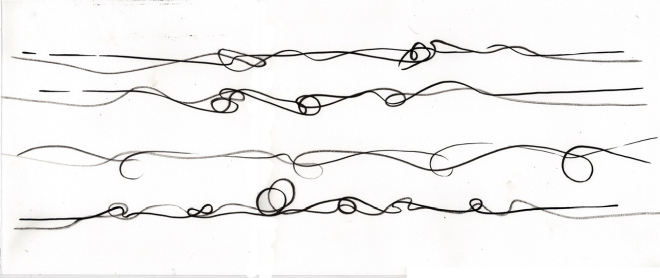
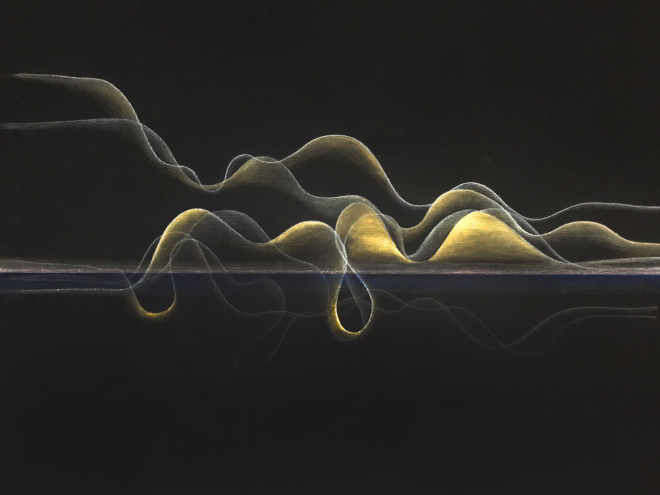
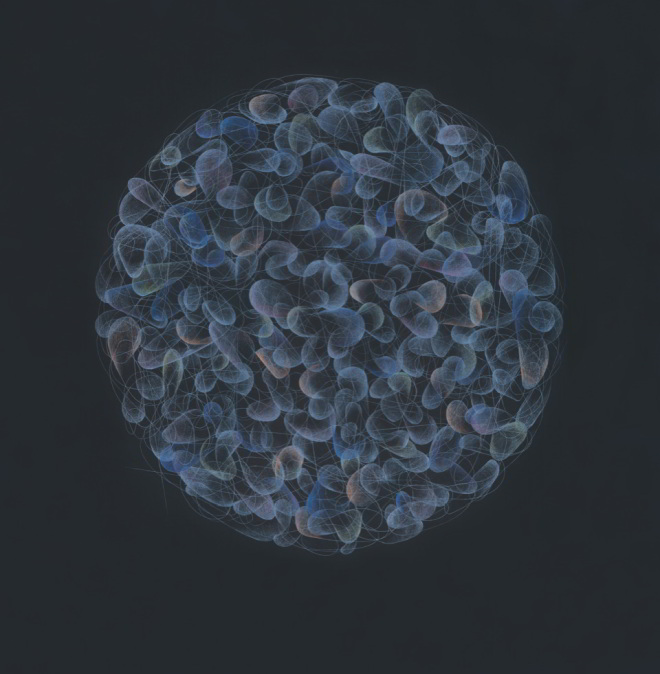
Diese Zeichnung wies einen Bezug zu einer Serie auf, an der Esther Rolinson zuvor unter dem Titel Gravitate gearbeitet hatte. Die Serie war der Höhepunkt der gleichnamigen Einzelausstellung, die 2017 im Watermans Art Centre in London stattfand. Rolinson hat ihre künstlerische Laufbahn durch die Schaffung von immersiven oder großformatigen Kunstinstallationen für Galerieräume oder als Dauerausstellung im öffentlichen Raum aufgebaut. Man kann sie als architektonische Interventionen oder urbane Interaktionen betrachten, aber für sie verkörpern sie allesamt Erfahrungen, die zum Leben erwachen.
Licht spielt bei dieser „Metamorphose“ eine wesentliche Rolle. In den meisten Werken Rolinsons dient das Licht nicht als Accessoire, sondern als primäres Material, um Konzepte und Emotionen auszudrücken. Die Künstlerin ist fasziniert von den vielen Möglichkeiten, die dieses Element mit sich bringt, von der Bewegung, den Schatten und den Farben, die es hervorbringen kann. Manchmal bezeichnet sie ihre Kunstwerke als Entitäten – als Wesen, die sie allein mit Bleistift und Papier erschafft.
Rolinson führt einen intensiven Dialog mit den digitalen Medien (wie zum Beispiel bei der Arbeit mit innovativer Computerkunst) und hat Erfahrung im Aufbau von riesigen Strukturen. Allerdings – und das ist ein wesentliches Merkmal von Rolinsons kreativem Prozess – beginnen alle ihre Werke mit abstrakten Zeichnungen, die sie nach einem von ihr formulierten System entwickelt und dann manuell anwendet. Ihre Zeichnungen sind nicht nur grobe Skizzen von Skulpturen oder Installationen: Sie sind Kreationen, in denen sich ihre Gedanken manifestieren, und stellen eigenständige Kunstwerke dar. Einige davon wurden zu Drucken wie Breathing the Breath of Others (2016), der vom Victoria and Albert Museum in London erworben wurde.
Rolinson schafft komplexe Mechanismen mit strengen Regeln für die Herstellung von Kurven und geraden Linien, die viel Aufmerksamkeit und Präzision erfordern, um exquisite Bilder zu komponieren. Während sie zunächst als zweidimensionale Zeichnungen entstehen, kann sich Rolinson diese leicht als riesige 3D-Installation im offenen Raum vorstellen. Sie ist Expertin für diese Art der Umsetzung; sie vermittelt den Ingenieuren ihre Ideen und arbeitet mit dem Team zusammen, das das Projekt in die Tat umsetzt, wie es bei Luminations der Fall war.
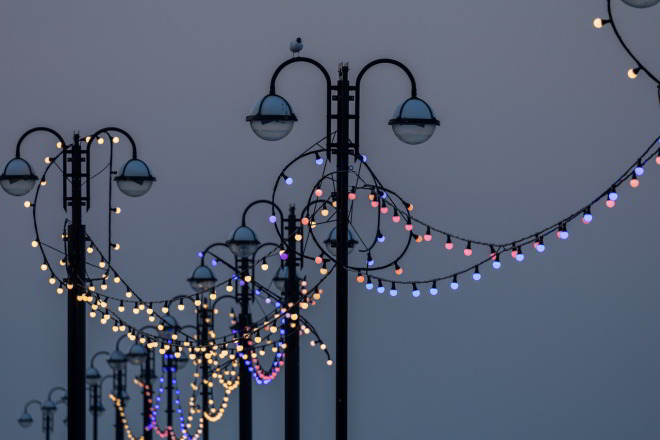
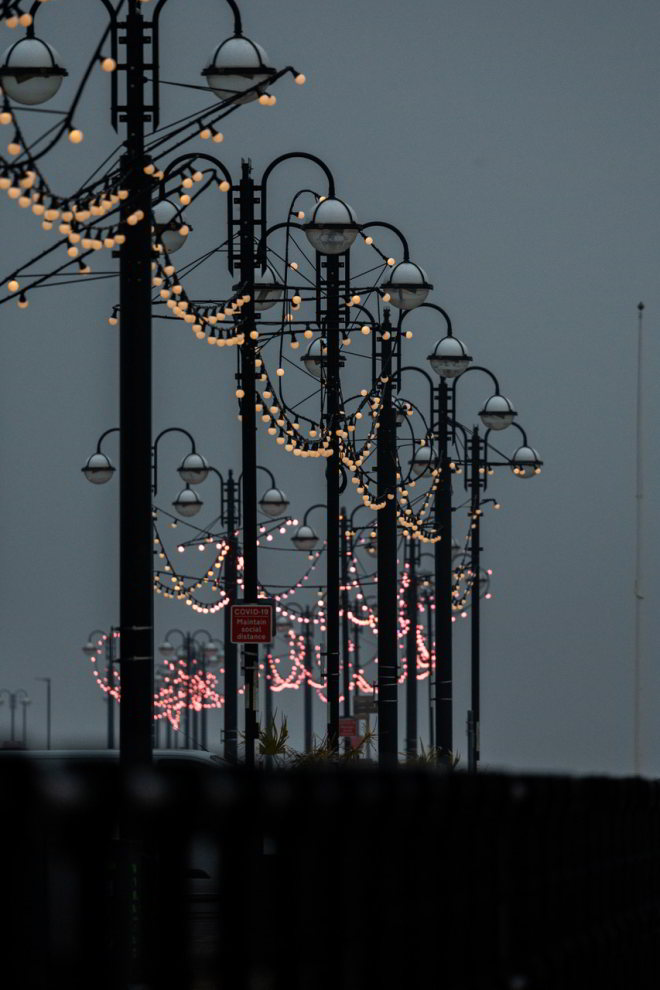
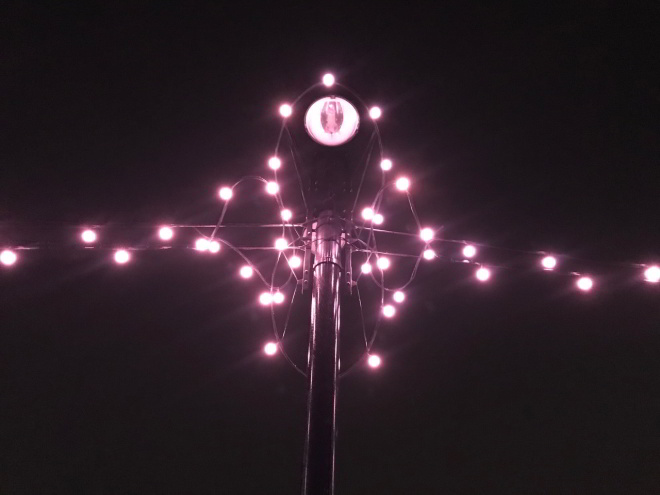
Die ortsspezifische Installation besteht aus einer integrierten Struktur von Linien und Schleifen, die von den Laternenpfählen herabhängen und Girlanden im Retro-Stil tragen, die fast 200 Muster von farbigen Lichtanimationen wiedergeben, die sie mit kreativen Codes erstellt hat. Esther Rolinson erklärte, dass die beiden Hauptgründe für die Herstellung von Luminations mit dieser Sorte alter Glühbirnen darin bestanden, nachvollziehbare Erinnerungen zu wecken und die eigentliche Szenerie so wenig wie möglich zu beeinträchtigen. Sie wollte die Installationen so in die Umgebung einbringen, als hätten sie schon immer dorthin gehört. Rolinson möchte nicht, dass das Kunstwerk als ein äußerer Eingriff gesehen wird. Ihr Gespür für den sozialen Kontext und die Umgebung sowie ihre künstlerische Vision erstrahlen förmlich im Licht von Luminations, einem Stadtprojekt unter künstlerischer Leitung.
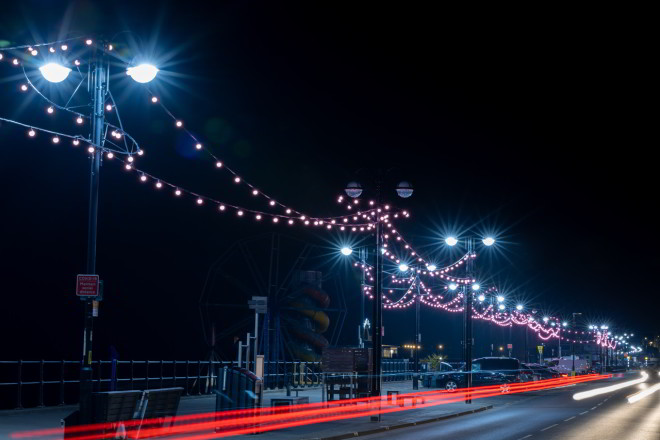
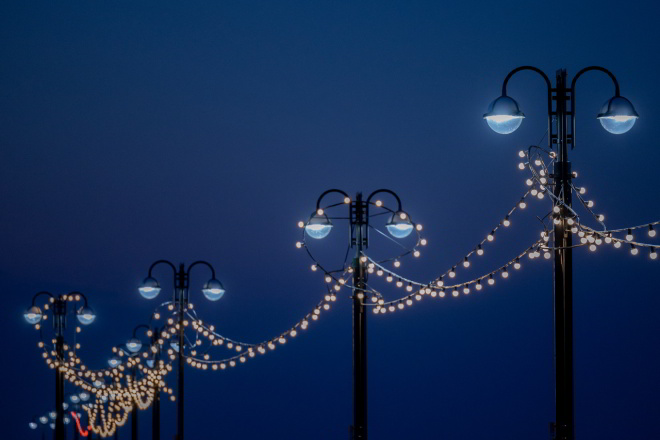
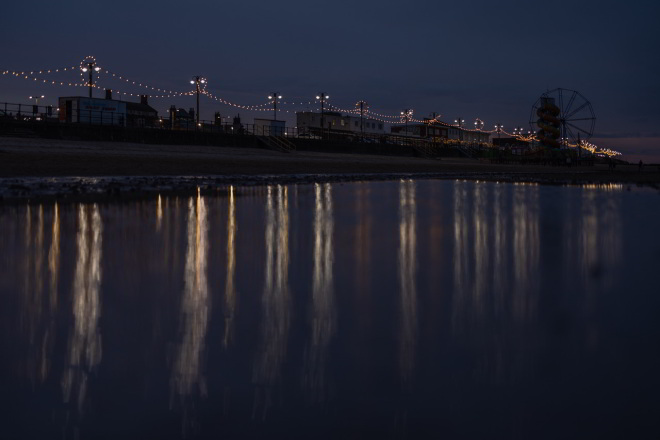
So erklärt Rolinson³: „Für mich ist es entscheidend, dass meine öffentlichen Kunstwerke den Menschen, die sie erleben oder sehen, ein Gefühl der Zugehörigkeit vermitteln. Das bedeutet, dass es sich nicht nur um ein Element handelt, das an diesem Ort platziert wurde. Ich vermeide die Auffassung, dass es sich um ein Kunstwerk handelt, da dies manchmal distanzierend wirken kann. Deshalb habe ich ganz bewusst Beleuchtung mit Girlanden verwendet, weil sie die Sprache dieser Küstenstädte spricht. Als Material war es ein einfacher Zugang, um ein eigentlich sehr komplexes Konzept visuell zu vermitteln. Ich habe mit einer kühnen Sprache gearbeitet, die ich aber klar und verständlich einsetzte, um den subtilen Charakter von Bewegungen und Gefühlen zu vermitteln. Es war ganz klar, dass dieses ortsbezogene Werk die Menschen entlang des linearen Weges der Promenade führen, aber auch ihre Erfahrung verändern sollte. Ich betrachte die Muster und Formen als eine Art abstrakte „Sprache der Freiheit“, und das war der Eindruck, den ich damit vermitteln wollte.
Von den ersten Zeichnungen, Prototypen, Tests und Konstruktionen, die in Zusammenarbeit mit dem Light Lab, einem Beratungsunternehmen für architektonische Beleuchtung, erstellt wurden, dauerte es etwa drei Jahre (wobei COVID das Projekt erheblich verzögerte), bis es fertig war. Esther Rolinson stellte Luminations schließlich am letzten Internationalen Frauentag, dem 8. März 2022, der Öffentlichkeit vor. Es wurden noch keine Statistiken darüber veröffentlicht, wie sich das Projekt auf die lokale Wirtschaft oder den Tourismus in der Region ausgewirkt hat. Helen Thompson sagte jedoch, dass der Stadtrat sehr positive Rückmeldungen von Ansässigen und Geschäftsleuten erhalten habe, die die Entscheidung für ein öffentliches Kunstwerk zur Wiederherstellung des Selbstwerts der Stadt bestätigten. ♦
(Übersetzung aus dem Englischen: Özlem Özdemir)
¹ In einer E-Mail-Konversation zwischen Caroline Menezes und Helen Thompson im Mai 2022
² In einem Gespräch zwischen Caroline Menezes und Esther Rolinson im April 2022
³ ebd.:2
CAROLINE MENEZES
Caroline Menezes ist eine in Berlin lebende Kunstautorin, Journalistin und Kuratorin. Sie hat an der University of the Arts London promoviert und hat weltweit Ausstellungen kuratiert. Als Kunstkritikerin arbeitete sie über 10 Jahre lang für Studio International. Ihr letztes Buch war der 2021 erschienene Band Tuneu: Trajectory, die Biografie des brasilianischen Künstlers Tuneu.
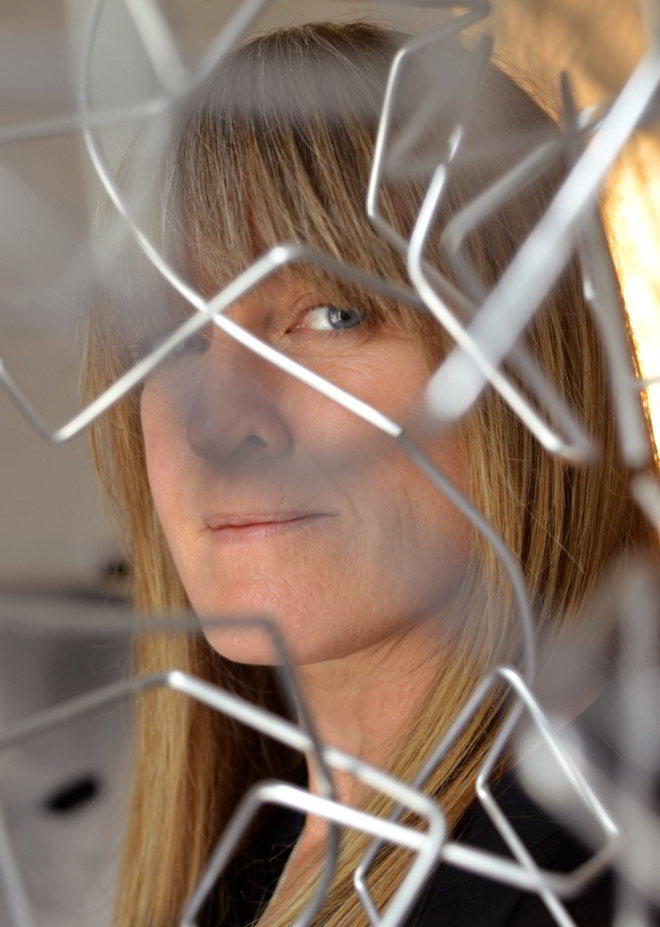
Esther Rolinson and her lights of renovation
British artist Esther Rolinson reveals Luminations: a large-scale public art installation that uses streetlights to entirely renew the spirit of an old seaside town in the north of England
Imagine an artwork that spans over 500 metres of computer-generated lights, with breath-taking colours and shapes, hovering almost 10 metres above the heads of pedestrians who stroll along the seafront of a picturesque small town on the English seacoast. This is Luminations, a site-specific art installation by British multimedia artist Esther Rolinson who used the typical coastal streetlights to generate wonder without disruption in Cleethorpes, a seaside town in North East Lincolnshire.
Esther Rolinson was commissioned to develop an artistic project to revamp and modernise the urban landscape of this place that, in bygone years, was a top beach resort destination in England. Luminations is an integral part of the public art scheme of the £3.8m North East Lincolnshire and Cleethorpes‘ Regeneration Programme. According to Helen Thompson1, Strategic Lead for Tourism at North East Lincolnshire Council, public art was key to reaching the goals of the whole process of rebuilding Cleethorpes‘ identity.
The decisive factor found during the project’s research phase was the experience of the sea as the main attraction for visitors. Transforming this experience would be crucial to the success of the regeneration plan. In Thompson’s words, public art is „an incredibly important way to bring spaces to life and enhance the environment“. To fulfil this aim, the Councils launched a quest to find an artistic mind that could fully grasp the nature of the coastal experience on Cleethorpes‘ promenade and would increase people’s awareness of it. After what Thompson described as a „tough competition“, they discovered that Esther Rolinson was the right person for such a task.
Esther Rolinson remembers that her first response, when invited to interview for the project, was to check out Cleethorpes on Google Earth, but no spark ignited. From above, it looked like there was nothing there, apart from remnants of a faded holiday destination that families traditionally went to long ago. This vague initial view triggered the artist to do whatever was possible to help regenerate this place that appeared to have fallen into oblivion.
As a fortunate surprise, Rolinson’s bleak first impression was radically changed when she finally went to Cleethorpes in February 2019 to talk with the renovation team. The artist recollects2: “The story of being there was very different. The train arrives at Cleethorpes directly onto the seafront and the proposed site for the artwork. When I stepped off the train, I was taken aback by the sheer sense of space and a barren beauty that Google Earth could never express. It is heart soaring. I felt a genuine connection to the site as it is like where I live in Hastings (a coastal city in the South of England), and I understood that the people of Cleethorpes love this quality of openness and freedom, and they want it to be recognised. When I came back from the interview, before I knew I had the job, I made a drawing about this feeling. To own this sense of freedom inside myself – to draw it for the simple reason that I could.”
This drawing was related to a series that Esther Rolinson had previously worked on titled Gravitate. The series was the highlight of the solo exhibition of the same name held at the Watermans Art Centre in London in 2017. Rolinson built her artistic trajectory by creating immersive or large-scale art installations for gallery spaces or on permanent display in the public realm. They can be seen as architectural interventions or urban interactions, but for her, they all embody experiences that come to life.
Light plays an essential role in this “metamorphosis”. Most of Rolinson’s artworks use light not as an accessory but as the primary material to express concepts and emotions. The artist is fascinated by the many possibilities that this element incorporates, the movement, shadows, and colours that it can bring. At times, she refers to her artworks as entities – as beings that she creates by using pencil and paper alone.
Rolinson has a deep dialogue with digital media (like working with innovative computer art) and is experienced in building enormous structures. However – and that is an essential characteristic of Rolinson’s creative process – all her creations begin with abstract drawings she develops following systems she formulates and then applies by hand. Her drawings are not just rough sketches of sculptures or installations: They are creations in which her thoughts manifest themselves and artworks in their own right. Some became prints, such as Breathing the Breath of Others (2016), acquired by the Victoria and Albert Museum in London.
Rolinson creates complex mechanisms with strict rules for making curves and straight lines that require attention and preciseness to compose exquisite images. While they first resulted in bidimensional drawings, she can easily envisage them as an immense 3D installation in the open space. Her expertise is in making this transposition, conveying her ideas to the engineers, and working alongside the team that will make it real, as was the case with Luminations.
The site-specific installation has an integrated structure of lines and loops hanging from the lamp posts, carrying retro style festoon lights that reproduce almost 200 patterns of coloured light animations that she produced with creative coding. Esther Rolinson explained that the two main reasons for making Luminations with this type of vintage light bulb were to evoke relatable memories and to minimally interfere with the actual scenery. She aimed to incorporate the installations into the setting as if they had always belonged there. Rolinson does not want the artwork to be seen as an external intrusion. Her awareness of the social context and surroundings, as well as her artistic vision, would shine through Luminations‚ lights as an artist-led urban project.
In her words, Rolinson3 explains: “For me, it is crucial that my public artworks allow people who live or see it to have the sense of belonging. It means that it is not just an element placed in that location. I avoid the notion of ‘it is an artwork’ as that sometimes can be distancing. So, I very deliberately used festoon lighting because it speaks to the language of these seaside towns. As a material, it was an easy doorway visually into conveying with familiarity a concept that was actually very complex. I worked with a bold language but used it articulately to communicate the subtle nature of movements and feelings. It was very clear that this site-specific needed to lead people along the linear route of the Promenade but also changed its experience. I think of the patterns and forms as a kind of abstract “language of freedom” which was the sensation that I want it to manifest.”
From the first drawings, prototypes, tests, and constructions made in partnership with the Light Lab, an Architectural Lighting Design Consultant, the project took around three years (with COVID delaying the project quite significantly) to be ready. Esther Rolinson finally revealed Luminations to the public on the last International Women’s Day, March 8, 2022. No statistics have yet been released about how it has impacted local businesses or tourism in the region. However, Helen Thompson said that the Council has received very positive feedback from residents and business owners, validating the choice for public artwork to restore the town’s self-worth.
1 In an e-mail conversation between Caroline Menezes and Helen Thompson in May 2022
2 In a conversation between Caroline Menezes and Esther Rolinson in April 2022
3 ibid.:2
CAROLINE MENEZES
Caroline Menezes is a Berlin-based art writer, journalist, and curator. She holds a PhD from the University of the Arts London and has curated exhibitions internationally. As an art critic, she worked for Studio International for over 10 years. Her last book was the 2021 Tuneu: Trajectory the biography of the Brazilian artist Tuneu.



